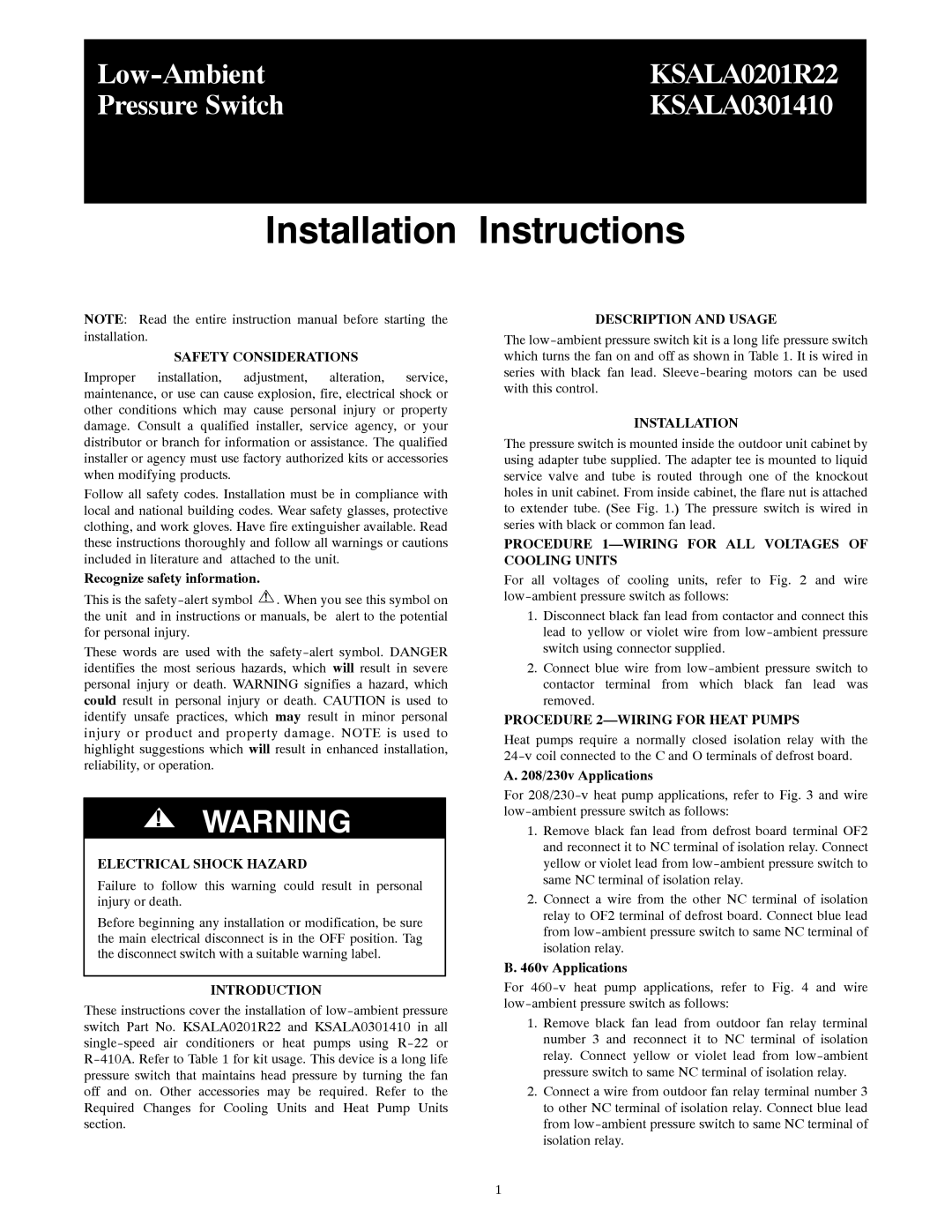KSALA0301410, KSALA0201R22 specifications
The Carrier KSALA0201R22 and KSALA0301410 are two models in Carrier's renowned lineup of air conditioning units, designed to deliver optimal cooling performance and energy efficiency. These units are ideal for both residential and commercial applications, ensuring comfort in various indoor settings.One of the standout features of the KSALA0201R22 and KSALA0301410 is their powerful cooling capacity. The KSALA0201R22 model offers an impressive 20,000 BTUs of cooling power, making it suitable for medium to large rooms. In contrast, the KSALA0301410 ramps up to 30,000 BTUs, handling larger areas with ease. This dynamic range allows customers to select a unit that best fits their specific needs, ensuring maximum comfort regardless of room size.
Energy efficiency is another critical characteristic of these models. Both units are engineered with advanced technologies aimed at reducing energy consumption while providing high operational efficiency. The KSALA series incorporates eco-friendly refrigerants, with the KSALA0201R22 using R-22, a common choice for many air conditioning systems. This not only helps in minimizing environmental impact but also contributes to lower utility bills for consumers.
In terms of design, the KSALA models feature compact and sleek aesthetics, providing a modern look that seamlessly integrates into various indoor environments. Their durable construction ensures reliability and longevity, making them a sound investment for years to come. The units are also equipped with user-friendly controls, allowing for easy adjustments to cooling settings and temperature preferences.
Furthermore, Carrier's commitment to innovation is evident in these models, which include a range of smart technologies. These units can be retrofitted with compatible smart thermostats, enabling users to control their air conditioning systems remotely. This capability adds convenience and promotes energy savings by allowing users to adjust their cooling settings when they are away from home.
Overall, the Carrier KSALA0201R22 and KSALA0301410 air conditioning units exemplify the brand’s dedication to quality, efficiency, and user comfort. With their robust cooling capacities, energy-efficient designs, and smart technology compatibility, these models are well-equipped to meet the demands of today’s consumers, ensuring a comfortable environment no matter the weather outside.

